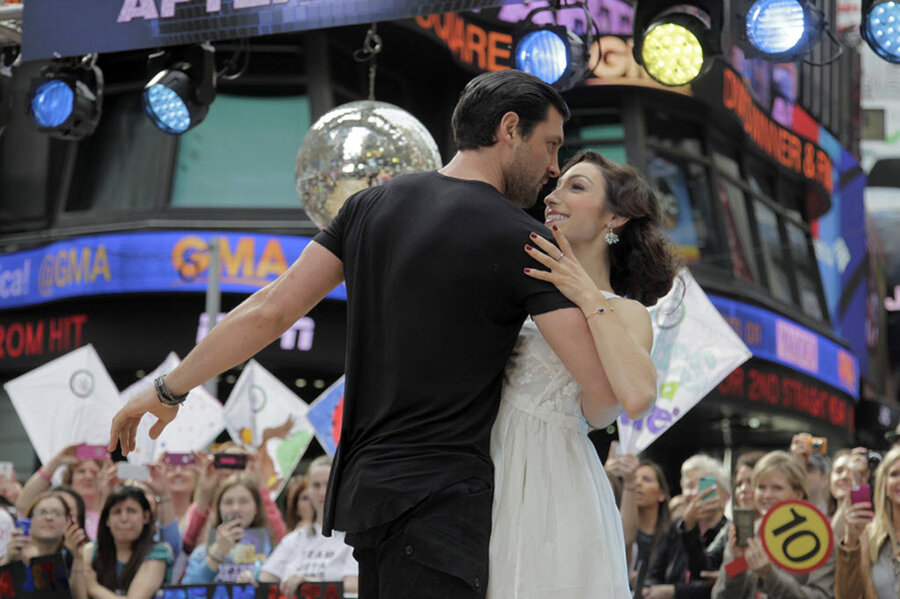Maksim Chmerkovskiy back on 'DWTS' – but does the cast help viewers dance?
Loading...
Maksim Chmerkovskiy, who has appeared on many seasons of the ABC hit reality competition “Dancing With the Stars,” is reportedly returning to the program.
Mr. Chmerkovskiy recently tweeted about his appearance on the program. The professional dancer last appeared on “Dancing With the Stars” in 2014, when he and his celebrity partner, ice dancer Meryl Davis, won the competition. It was the first time Chmerkovskiy had come in first.
“Dancing” first premiered on ABC in 2005 and typically airs a fall and spring season. Last season featured Nyle DiMarco, who had previously become the first deaf winner on the CW modeling competition “America’s Next Top Model,” and his partner, Peta Murgatroyd, winning the competition.
“Dancing With the Stars” often performs well in the ratings, with the program ranking eighth in terms of total viewers for the 2015-2016 TV season. However, the show does less well with the 18-49 viewership demographic that is valued in the TV industry, with “Dancing” ranked all the way down at number 42.
“Dancing” is credited with inspiring new popularity for ballroom dancing. Christjohn Batters, assistant manager and instructor at the Ballroom Dance Clubs of Atlanta, told CNN in 2009 that he has seen “a steady increase and an influx of people wanting to learn how to dance” and credited programs like “Dancing” with getting people into dance studios.
“People see dance on TV, and they see people learning to dance ... and they think, 'OK, this is something I could learn to do,’” Mr. Batters said.
This seems to have continued all over the world, with Laura Walters of the New Zealand news website Stuff.co.nz writing last year, “Dance schools are seeing a surge in student numbers, with the fleet of foot keen to fire up their foxtrot and polish their polka thanks to reality television.” (The New Zealand version of “Dancing” originally aired from 2005 to 2009 and returned after a break in 2015.)
Sonia Mansell, owner of Stepz Dance Studio in Auckland, credited “Dancing” with a “big surge” in new faces in the studios.
And what do those who work at dance studios think of “Dancing”? It seems that shows like “Dancing” have been inspiring viewers for a long time – including some of today's pros. Ms. Mansell told Stuff.co.nz that a similar TV show, the program “Come Dancing,” inspired her to start performing.
“That’s exactly how I got into it,” she said.






